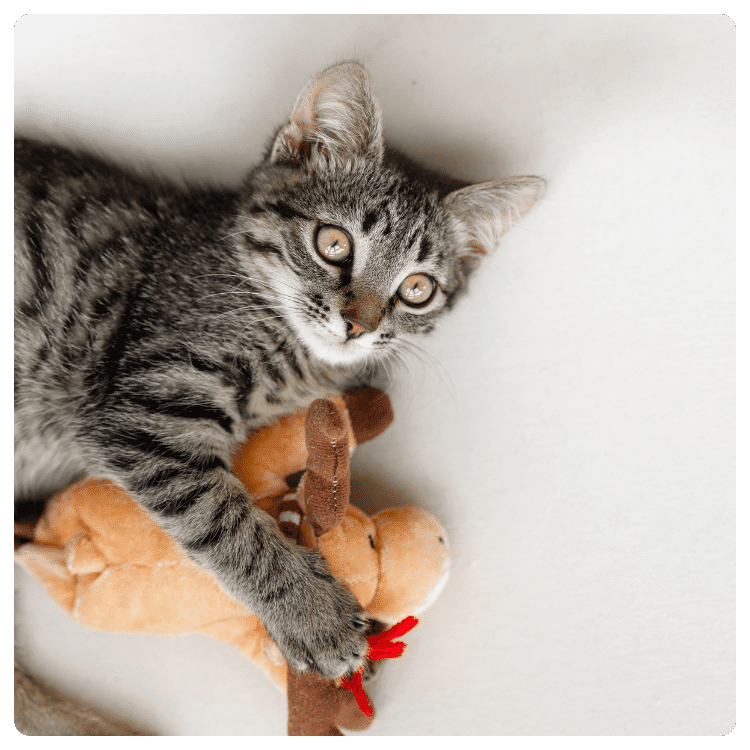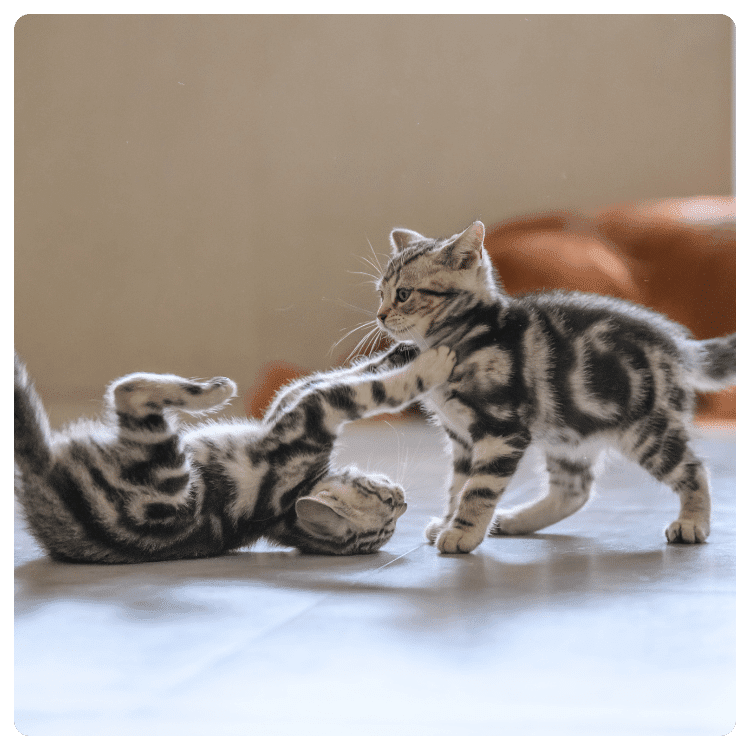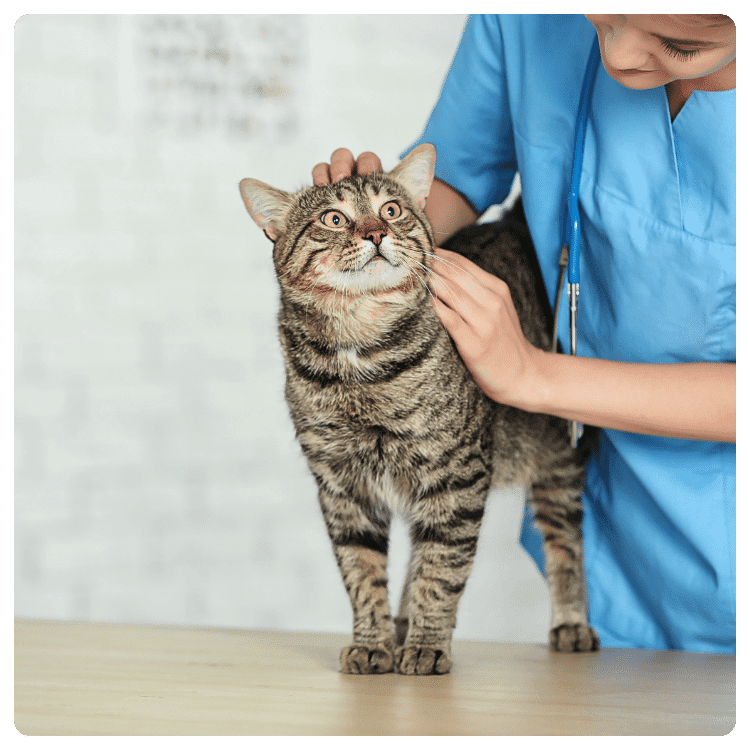Cat Behavior Problems and Training Tips: A Comprehensive Guide

Cats are enigmatic and independent creatures, captivating us with their mysterious ways and unique personalities. Understanding cat behavior is crucial for creating a harmonious living environment for both cats and their owners. When we comprehend why our feline friends act the way they do, we can better cater to their needs and foster a stronger bond.
However, cat owners often encounter a range of behavior problems that can be perplexing and frustrating. Common issues include inappropriate scratching, litter box aversion, aggression, excessive meowing, and destructive chewing. These problems can strain the relationship between cats and their owners, leading to stress and dissatisfaction for both parties.
The purpose of this blog is to help cat owners identify common behavior issues and provide effective training tips. By understanding the root causes of these behaviors and learning how to address them, you can ensure a happier, healthier life for your feline companion. Whether you’re dealing with a mischievous kitten or a stubborn adult cat, this guide aims to equip you with the knowledge and tools to tackle behavior problems and promote positive interactions with your pet.
Understanding Cat Behavior

Natural Instincts
Cats are complex creatures with deeply ingrained instincts that drive much of their behavior. Recognizing these instincts can help you understand why your cat behaves in certain ways and how to address any problematic behaviors.
- Hunting: Cats are natural predators. Even domesticated cats retain a strong hunting instinct. This is why they often pounce on toys, chase after moving objects, and sometimes bring “gifts” of captured prey to their owners. Providing interactive play that mimics hunting can help satisfy this instinct and reduce boredom.
- Territorial Behavior: Cats are territorial animals. They mark their territory through scent marking, scratching, and patrolling. They may become stressed or aggressive if they feel their territory is threatened by other animals or changes in their environment. Ensuring your cat has a safe, secure space can help alleviate territorial anxiety.
- Climbing and Perching: In the wild, cats climb trees to survey their surroundings, escape predators, and hunt. Indoor cats still have this instinct, which is why they often seek high places like shelves or windowsills. Providing vertical spaces like cat trees or shelves can help fulfill this need.
- Scratching: Scratching serves multiple purposes for cats: it sharpens their claws, marks their territory with scent glands in their paws, and provides a way to stretch their muscles. Providing appropriate scratching posts can help redirect this behavior away from furniture.
Communication
Cats communicate in various ways, primarily through body language, vocalizations, and scents. Understanding these methods can help you better interpret your cat’s needs and feelings.
- Body Language:
- Tail Position: A high tail often indicates a happy, confident cat, while a low or tucked tail can signal fear or submission. A puffed-up tail usually means the cat is frightened or agitated.
- Ears: Forward-facing ears suggest interest or curiosity, while flattened ears can indicate fear, aggression, or irritation.
- Eyes: Slow blinking at you is a sign of affection and trust, while dilated pupils can indicate excitement, fear, or aggression.
- Posture: An arched back and raised fur typically signal fear or aggression, whereas a relaxed body posture suggests the cat feels safe and content.
- Vocalizations:
- Meowing: Cats primarily meow to communicate with humans. Different pitches and lengths of meows can convey different messages, from greeting to expressing hunger or discomfort.
- Purring: Often associated with contentment, purring can also occur when a cat is in pain or anxious as a self-soothing mechanism.
- Hissing and Growling: These sounds indicate a cat feels threatened or aggressive and is warning others to stay away.
- Scents:
- Scent Marking: Cats have scent glands on their cheeks, paws, and flanks. They use these glands to mark their territory by rubbing against objects, scratching, or even urinating.
- Social Bonding: Cats often groom each other to reinforce social bonds, and they may also groom their human companions as a sign of affection.
Common Cat Behavior Problems

Aggression
Types of Aggression:
- Play Aggression: This type of aggression often occurs in kittens and young cats, manifesting as biting and scratching during play.
- Territorial Aggression: Cats may become aggressive when they feel their territory is being invaded by another cat or a new pet.
- Redirected Aggression: A cat may exhibit aggression towards a person or another pet if they are unable to reach the source of their frustration (e.g., seeing another cat outside a window).
Causes:
- Fear: A frightened cat may become aggressive as a defense mechanism.
- Lack of Socialization: Cats that haven’t been properly socialized may not know how to interact appropriately with people or other animals.
- Medical Issues: Pain or discomfort from medical conditions can cause a cat to act aggressively.
Solutions:
- Identify Triggers: Observe and note what seems to provoke your cat’s aggression. This can help in managing and reducing these triggers.
- Provide Safe Spaces: Ensure your cat has access to quiet, secure areas where they can retreat and feel safe.
- Consult a Veterinarian: If aggression persists, a vet check-up can rule out medical causes and guide behavioral interventions.
Litter Box Issues
Types:
- Avoidance: The cat stops using the litter box entirely.
- Inappropriate Elimination: The cat uses places other than the litter box to urinate or defecate.
Causes:
- Dirty Litter Box: Cats are clean animals and may avoid a litter box that isn’t kept clean.
- Medical Issues: Conditions like urinary tract infections can cause litter box avoidance.
- Stress: Changes in the household, such as a new pet or moving, can stress a cat and lead to litter box problems.
Solutions:
- Clean the Box Regularly: Ensure the litter box is cleaned daily to keep it fresh and inviting.
- Ensure Proper Box Placement: Place the litter box in a quiet, easily accessible location.
- Veterinary Check-Up: If litter box issues persist, consult a vet to rule out any underlying medical conditions.
Scratching Furniture
Reasons:
- Marking Territory: Cats have scent glands in their paws and scratch to mark their territory.
- Stretching: Scratching helps cats stretch their muscles.
- Keeping Claws Healthy: Scratching helps remove the outer layer of claw sheaths.
Solutions:
- Provide Scratching Posts: Offer various scratching posts and pads to divert scratching behavior from furniture.
- Use Deterrents on Furniture: Products like double-sided tape or citrus sprays can deter cats from scratching furniture.
- Positive Reinforcement: Reward your cat with treats and praise when they use the scratching post.
Excessive Meowing
Reasons:
- Attention-Seeking: Some cats meow to get their owner’s attention.
- Hunger: Cats may vocalize when they are hungry or anticipating mealtime.
- Stress: Changes in the environment or routine can cause a cat to meow more.
- Medical Issues: Conditions like hyperthyroidism can lead to increased vocalization.
Solutions:
- Ignore Attention-Seeking Meows: Avoid reinforcing this behavior by giving in to it.
- Ensure Regular Feeding Schedule: Stick to a consistent feeding schedule to reduce hunger-related meowing.
- Consult a Vet if Meowing Persists: Persistent meowing should be checked by a vet to rule out medical issues.
Biting
Reasons:
- Playfulness: Young cats often bite during play.
- Overstimulation: Cats can become overstimulated from petting or rough play and bite as a result.
- Fear: Fearful cats may bite defensively.
Solutions:
- Redirect with Toys: Use cat toys to play with your cat instead of using your hands.
- Recognize Signs of Overstimulation: Learn to read your cat’s body language to prevent bites.
- Provide a Safe Environment: Ensure your cat feels safe and secure to reduce fear-induced biting.
Nighttime Activity
Causes:
- Natural Nocturnal Instincts: Cats are naturally more active at night.
- Boredom: Lack of stimulation during the day can lead to nighttime activity.
Solutions:
- Play with Your Cat Before Bedtime: Engaging your cat in vigorous play sessions before bed can tire them out.
- Create a Comfortable Sleeping Area: Provide a cozy, quiet space for your cat to sleep at night.
By understanding these common behavior problems and their underlying causes, you can take proactive steps to address them, creating a more harmonious relationship with your feline friend.
Training Tips for Common Behavior Problems

Positive Reinforcement
Explanation: Positive reinforcement involves rewarding desired behavior to encourage its repetition. Rewards can include treats, praise, or play, making it an effective and humane training method.
Examples:
- Encouraging Use of Scratching Posts: Reward your cat with treats or praise whenever they use their scratching post instead of furniture.
- Rewarding Calm Behavior: When your cat remains calm in situations that previously triggered aggression or fear, provide treats or gentle petting to reinforce this behavior.
Clicker Training
Explanation: Clicker training uses a small device that makes a clicking sound to mark desired behavior, immediately followed by a reward. This method helps cats understand exactly which behavior is being rewarded.
Steps:
- Introduce the Clicker: Start by clicking the device and immediately giving your cat a treat. Repeat this several times until your cat associates the click with a reward.
- Pair the Clicker with Rewards: Once your cat understands the click means a treat is coming, start clicking when your cat performs a desired behavior.
- Gradually Train Specific Behaviors: Use the clicker to mark specific behaviors you want to reinforce, such as sitting, using the litter box, or coming when called. Always follow the click with a treat.
Creating a Stimulating Environment
Enrichment: Cats need mental and physical stimulation to stay healthy and happy.
- Toys: Provide a variety of toys that cater to your cat’s hunting instincts, such as feather wands, balls, and interactive puzzle toys.
- Interactive Feeders: Use food puzzles and treat-dispensing toys to make mealtime more engaging.
- Climbing Structures: Install cat trees, shelves, and other vertical spaces for climbing and perching.
Routine: Establish a regular play and feeding schedule to give your cat a sense of stability and predictability.
- Play Sessions: Engage your cat in play sessions multiple times a day, especially before bedtime to reduce nighttime activity.
- Feeding Schedule: Stick to consistent feeding times to help reduce anxiety and excessive meowing.
Socialization
Importance: Proper socialization helps reduce fear and aggression, making cats more comfortable around new people, pets, and environments.
Methods:
- Gradual Introduction to New People and Pets: Introduce your cat to new people and pets slowly and in a controlled manner. Allow your cat to approach at their own pace.
- Positive Experiences: Ensure that interactions with new people, pets, and environments are positive by using treats and praise to create a positive association.
Addressing Anxiety and Stress
Signs: Anxiety and stress in cats can manifest as hiding, excessive grooming, or aggression.
Solutions:
- Pheromone Diffusers: Use products like Feliway, which release calming pheromones to help reduce anxiety.
- Provide Hiding Spaces: Ensure your cat has access to quiet, secluded areas where they can retreat and feel safe.
- Maintain a Consistent Routine: Cats thrive on routine. Try to keep feeding, playtime, and other activities on a regular schedule to minimize stress.
When to Seek Professional Help

Behavioral Specialist
When to Consult a Cat Behaviorist:
- Persistent Aggression: If your cat continues to show signs of aggression despite your efforts to address it, a behaviorist can help identify underlying triggers and develop a tailored intervention plan.
- Severe Anxiety or Fear: If your cat exhibits extreme anxiety or fear that affects their quality of life, such as constant hiding or aggression towards everyone, a behaviorist can provide specialized strategies to help manage and reduce these behaviors.
- Complex Behavior Issues: For complicated or multifaceted behavior problems, such as chronic litter box avoidance or severe territorial issues, a cat behaviorist has the expertise to analyze the situation and suggest effective solutions.
- Training Assistance: If you struggle with training your cat or need guidance on advanced training techniques like clicker training, a behaviorist can offer practical advice and hands-on help.
Veterinarian
Importance of Ruling Out Medical Issues:
- Behavior Changes: Sudden or unusual changes in behavior, such as increased aggression, litter box issues, or excessive vocalization, can often be linked to underlying medical conditions. A veterinarian can conduct a thorough examination to rule out illnesses or injuries.
- Persistent Behavior Problems: If cat behavior problems persist despite consistent training and environmental adjustments, it’s crucial to have your cat evaluated by a veterinarian. Conditions like urinary tract infections, thyroid problems, or dental issues can manifest as behavioral changes.
- Physical Symptoms: Any behavior problem accompanied by physical symptoms, such as changes in appetite, weight loss, or lethargy, should be addressed by a veterinarian immediately. These could indicate a serious health issue that needs prompt treatment.
- Medication Needs: In some cases, medication may be necessary to manage behavioral issues, especially those related to anxiety or severe aggression. A veterinarian can prescribe appropriate medication and monitor your cat’s response.
Conclusion
Understanding and addressing cat behavior problems is essential for fostering a harmonious relationship with your feline companion. By recognizing their instincts, learning how they communicate, and identifying common behavior issues, you can create a supportive environment that caters to their needs.
Remember, addressing behavior problems takes time, patience, and consistency. Positive reinforcement, clicker training, creating a stimulating environment, socialization, and addressing anxiety and stress are all effective strategies that require dedication. Don’t hesitate to seek professional help from a cat behaviorist or veterinarian when necessary, as they can provide valuable insights and solutions tailored to your cat’s unique situation.
Be patient and consistent with your training efforts, and you’ll be rewarded with a happier, healthier, and more well-behaved cat. By investing in understanding your cat’s behavior and taking proactive steps to address issues, you can ensure a fulfilling and enjoyable companionship for years to come.







































